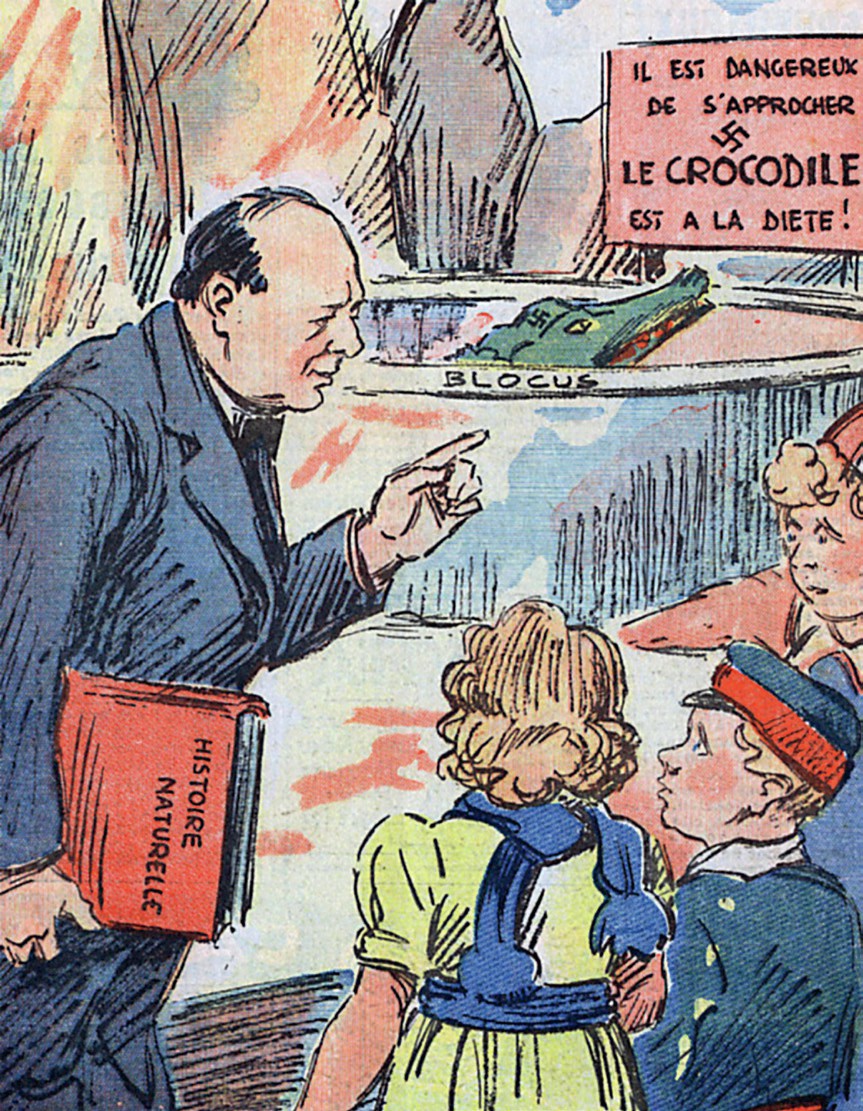
Interpretation A
French cartoon from 1935 showing Winston Churchill lecturing neutral countries about the dangers of a rising Nazi Germany. After the Second World War the final volume of Churchill’s The History of the English Speaking Peoples reinforced the position that appeasing Hitler had been a terrible mistake
Interpretation questions are difficult to answer well. The top levels of the mark scheme require you to analyse the interpretation in question but to do so within a framework which explains the ways in which interpretations of appeasement and responsibility for the Cold War have changed. The best students are able to analyse the interpretation by discussing its author and when it was written before discussing the wider changes of interpretations over time. Yet it is vital that your answers to these types of questions are rooted in a discussion of the interpretation and do not merely offer pre-learned descriptions of the ways in which interpretations change over time.
Interpretation A helps us to understand the view of Chamberlain’s appeasement policy which was current during the Second World War and fuelled by the publication of Churchill’s history after the war. However, in 1961 A. J. P. Taylor’s Origins of the Second World War provided a new interpretation. He argued that Britain’s politicians were not feeble and outwitted by Hitler. A. J. P. Taylor’s long lens view of Germany’s development in the nineteenth and twentieth centuries as the major central European power meant that Chamberlain’s ambition to reach a diplomatic compromise with the Nazis had some merits.
Your organisation does not have access to this article.
Sign up today to give your students the edge they need to achieve their best grades with subject expertise
Subscribe




